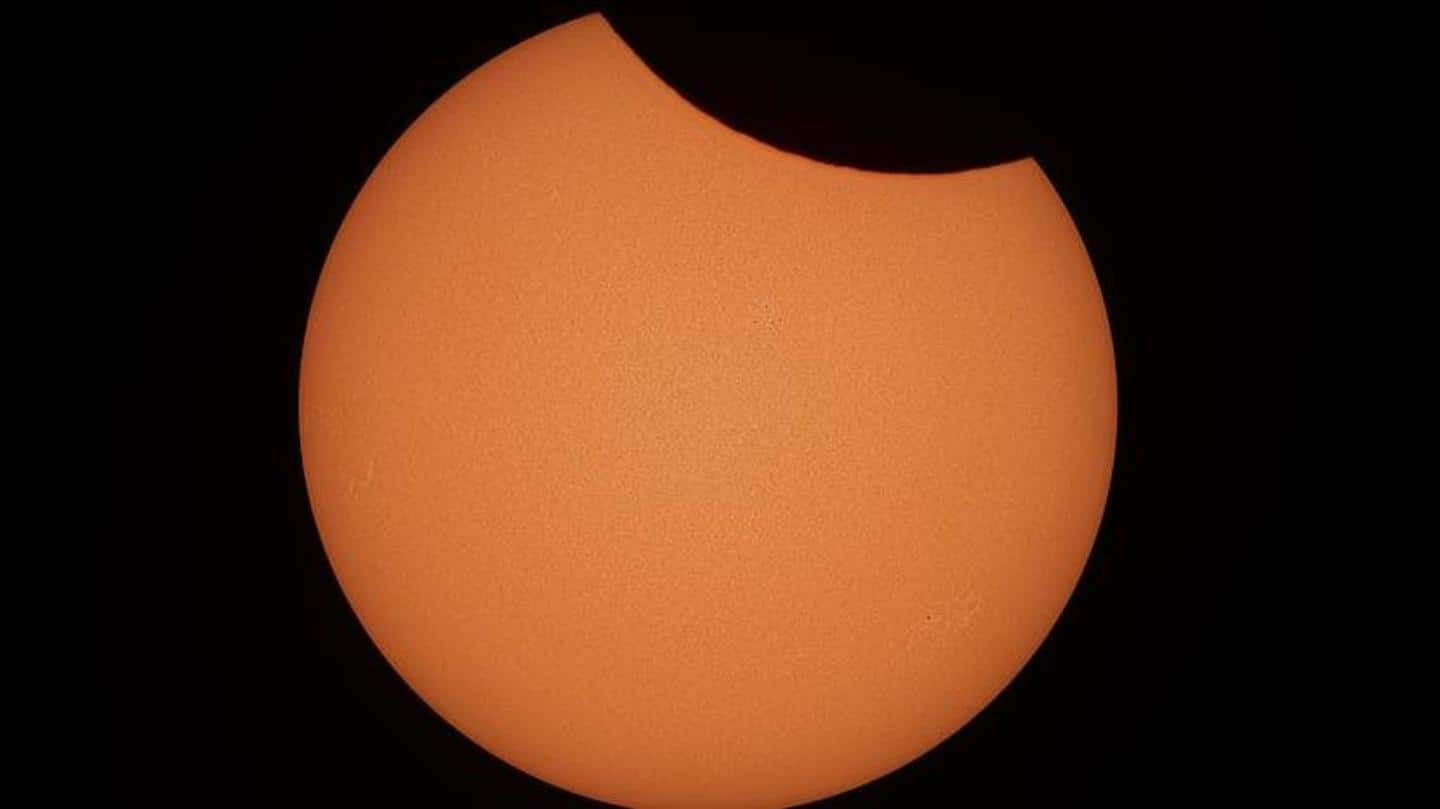
First Solar Eclipse of 2022: Timing, visibility and some facts
What's the story
The first solar eclipse of 2022 will take place on April 30.
It will start at 12:15 am on the intervening night of April 30-May 1 and last till 4:07 am.
Since the Moon, Sun, and Earth won't be perfectly aligned, it'll be a partial eclipse.
Only the outer part of the Moon's shadow, known as the penumbra, will be cast on the Earth.
Solar eclipse
What is a solar eclipse?
A solar eclipse occurs when the Moon intervenes and casts a shadow on the Earth, blocking the Sun's light.
This year, the solar eclipse is a deep partial one and will be visible only from the thinly populated regions of Earth and will conceal about half the sunlight.
Since the Moon won't completely cover the Sun, it will be crescent in shape.
Visibility
Where will the eclipse be visible?
This eclipse won't be visible in India.
The astronomical event will be visible along the northwestern coastline of Antarctica, in the South Pacific Ocean, the Southern Ocean, and the Atlantic Ocean off South America's southeastern coast, including the Falkland Islands.
It will also be visible from Argentina, Chile, Paraguay, Bolivia, and Uruguay.
You can watch it live on NASA's YouTube channel.
The year
Other solar and lunar eclipses set to happen in 2022
The April 30 partial solar eclipse will be followed by a Total lunar eclipse on May 15-16.
The next solar eclipse is due to happen on October 25, 2022, and it would also be a partial eclipse.
The October solar eclipse will be followed by another total lunar eclipse on November 7-8.
You will have to wait for 2023 for a total solar eclipse.
Facts
Some facts about eclipses
Did you know that each eclipse is accompanied by another eclipse in an approximately 35-day window?
This window is called an eclipse season.
Sometimes, the number of eclipses in one season can go as high as three. However, this year the two eclipse seasons will have two eclipses each.
There are three major types of eclipses--total, partial and annular.
Annular eclipse
When does the 'diamond ring' eclipse happen?
The annular solar eclipse is probably the most fascinating.
It appears when the New Moon covers the Sun's center but leaves its visible outer edges, thus creating a "ring of fire" or annulus.
The Sun, Earth, and Moon should be in a straight line for this occurrence.
The Moon should also be near its farthest point from Earth, called the apogee.